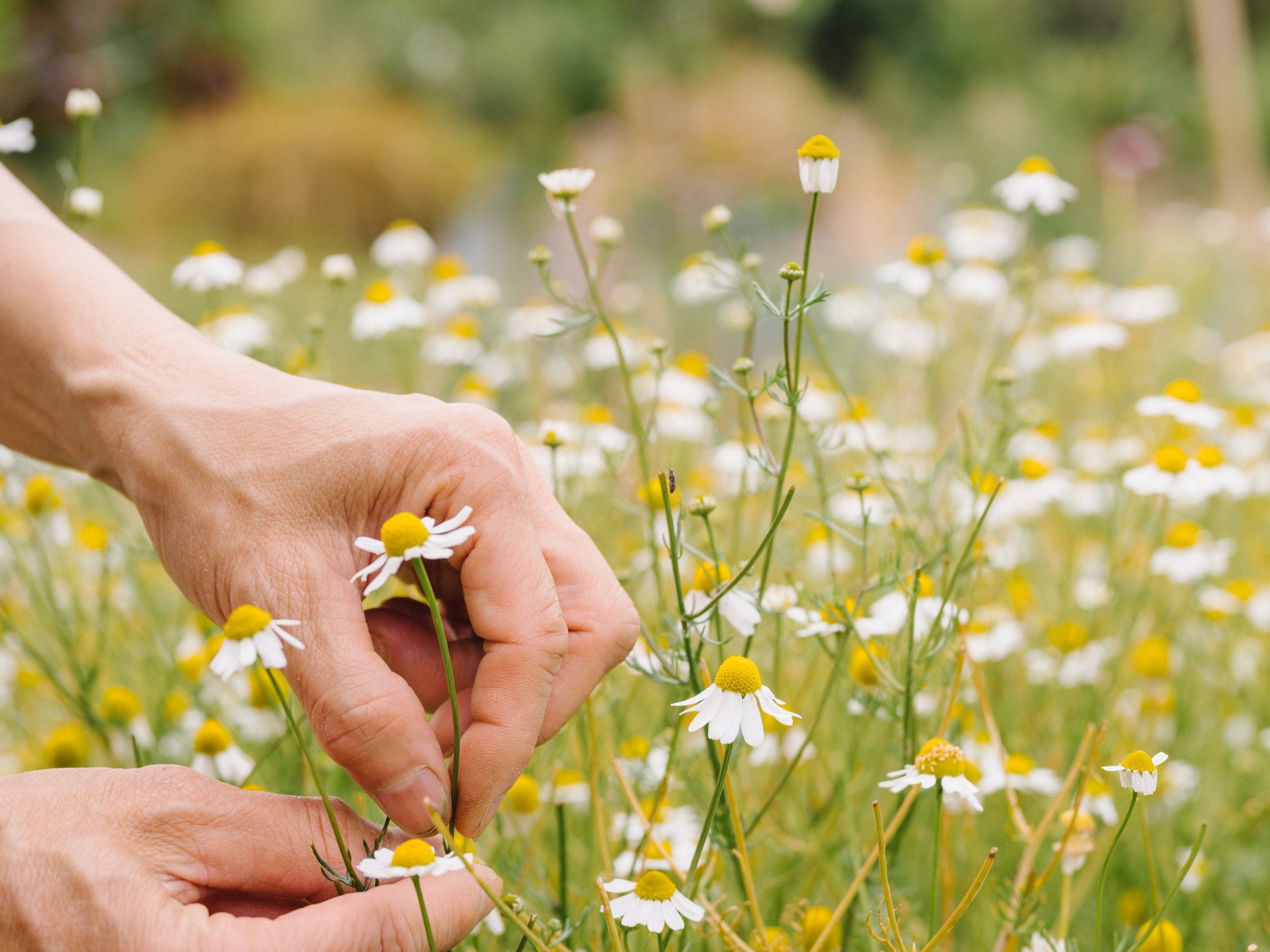Chamomile (Matricaria chamomila)
Chamomile is a gentle relaxing and unassuming herb that has been used in aromatherapy, teas, skincare, haircare and as a general part of health and wellbeing.
The daisy-like flowering plant comes from the Asteraceae family of plants (which also includes sunflowers, Echinacea and marigold). The name chamomile comes from the Greek word “chamomaela” or “ground apple” which comes from it’s refreshing, apple-like scent. There are two main chamomile varieties; German Chamomile (Matricaria chamomila) a low annual bush gowing up to 60cm in height and Roman Chamomile (Chamaemelum nobile) which is a low growing perennial groundcover. Chamomile is originally from southern Europe and now grows globally.
Chamomile has been revered for thousands of years, first documented by the ancient Egyptians and Greeks (by Hippocrates). In ancient Egypt, chamomile was sacred and dedicated to the sun god Ra and it was highly revered over other herbs for both its healing powers and beauty enhancing qualities. Chamomile flowers are found depicted in many ancient Egyptian hieroglyphics. Chamomile is also one of the “Nine Sacred Herbs” of the “Lacnunga” (Remedies), a collection of Anglo-Saxon medical texts.
Chamomile is a well documented medicinal plant in the world across many cultures and is said to support a variety of healing applications. It is often used for its natural sedative properties (calming and sleep enhancing) as well as for antispasmodic, anti-inflammatory, antiseptic, anti-allergen, antibacterial and anti-fungal properties. Chamomile has also been used to treat digestive problems, ulcers, menstrual troubles, allergies, asthma, arthritis, colic, headaches, insect bites, eczema, acne, wounds, burns, eye inflammation, cold sores and anxiety. Chamomile is considered one of the safest herbs to administer to young children.
Most people are familiar with the calming, soothing effect of a cup of chamomile tea, and it is one of the world’s most popular herbal teas with more than a million cups consumed daily. Chamomile is also used in a range of skincare applications due to its potential to naturally soften, moisturise and rejuvenate skin.
Chamomile is even known to have healing and soothing effects on other plants. Herbalist A. Bardswell in his book The Herb Garden, called chamomile "the plant's physician" and it has been discovered that Chamomile repels plant pests protecting both the chamomile as well as neighbouring plants.
Here at Black Teal Bay, we grow our organic certified German Chamomile flowers (Matricaria chamomilla) for use in our All is Calm oil and the dried flowers for our organic chamomile tea.
Chamomile growing at Black Teal Bay


